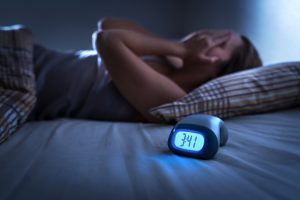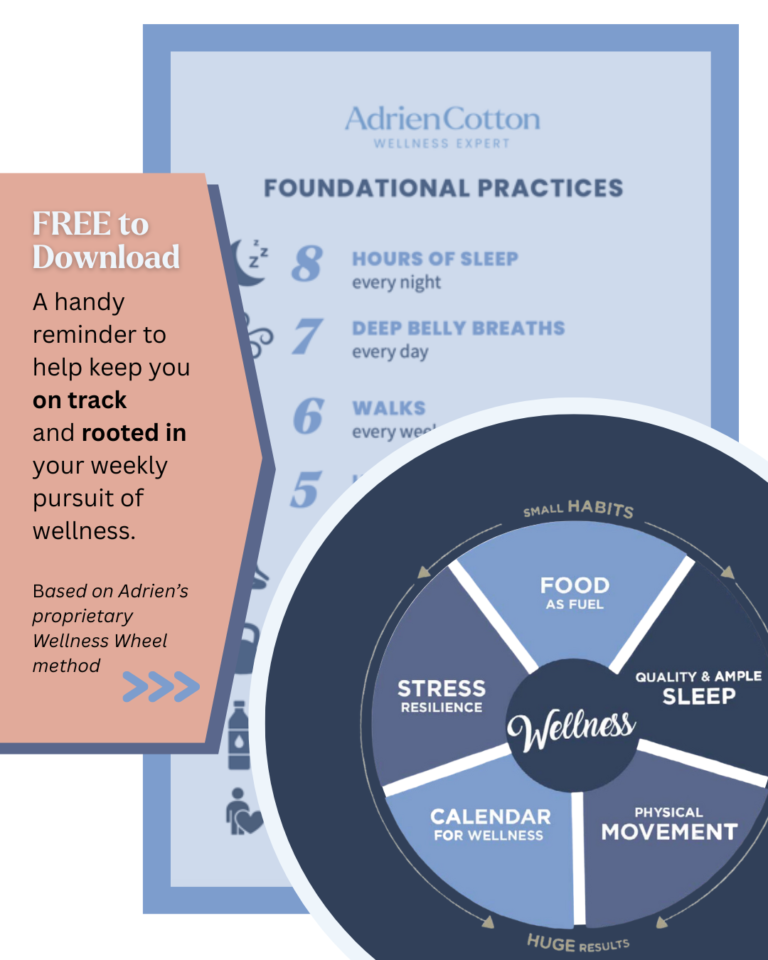I’m often asked what to do when you wake up in the middle of the night and cannot fall back to sleep. I totally get those moments.
During perimenopause, I often woke up drenched in sweat with my brain on overdrive. Add in caring for twin toddlers, one who would often wake throughout the night, and I found myself wondering if I would ever experience a good night’s sleep again.
Not only did these sleepless nights leave me feeling exhausted, but I was perpetually stressed and worried if the next night would be the same…sleepless. Suffice it to say, my confidence took a beating some days as the weariness left me feeling like no decision was a good decision.
There has been a tremendous amount of research on the science of sleep over the past few years. Experts of course agree and disagree, like they do about food, yet they can all agree on this: QUALITY trumps quantity. The quality means we don’t awaken during the middle of the night. For any reason. Period.

Over the past dozen years since my perimenopause experience in my early forties, I learned more about the source of my 1 AM – 3 AM sleepless nights. It took time and intention to work through the tools to go back to slumber. I’ve also now learned 35% of Americans awaken in the middle of the night.
Why do we wake up? Here are a few of the top culprits.
- Thirst
- Heat/hot room
- Bad dream
- Worries, going over to-do list
- Our partners
Before we dive into how to handle awakening, we cannot diminish the importance of setting you up for quality sleep. As you’ll see, awakenings can be 100% prevented by employing one or more of these tools.

Here are just a few of my suggestions for finding restful sleep during a restless night. I share these tips to master your sleep plus a dozen more based particularly on new research about this in concierge small group wellness.
1. Create a consistent and repeatable bedtime routine.
We need to tell our brains when it is time for sleep. Our brains are wired to sleep from the minute we wake up. I can assure you SHE is preparing, and demanding it! Our bedtime routine includes what we do the hour or so before slumber. As much as I can, I do the same activities (dim the lights, put on my PJs, wash my face, enjoy a bath, brush my teeth, and read) night after night. I keep the difficult conversations, the stressful work activities or thoughts, and tense news stories away from my brain for that last hour of the day. Why? Because I want to set myself up for the best sleep possible. Conversely, if I am literally BUSY or stressful thoughts are swirling in my head up to the minute my head hits the pillow, the quality of my sleep will reflect this. I need a plan to counteract this, which is why I stay disciplined in my bedtime routine.
2. Set up your environment for optimal sleep.
I like to call this my “most important appointment of the day.” Creating an environment conducive to sleep will not only help you drift off easily but also create an ideal environment for remaining asleep AND falling back to sleep when insomnia or night sweats creep in. This includes setting the temperature to 66-68 degrees and keeping the bedroom quiet, calm, and, yes, cozy.
Again, keep the busy brain out of the bedroom.
3. Minimize those middle-of-the-night restroom trips.
The more we can eliminate the possibility of waking at 2 AM to visit the restroom, the more likely we will sleep through the night. For this, I borrow from Craig Ballantyne, the author of The Perfect Day Formula and former coach of mine, who created the 10-3-2-1-0 rule:
- 10 hours before bed, stop all forms of caffeine
- 3 hours before sleep, shut down all tech devices
- 2 hours before sleep, stop all liquids
- 1 Hour before bed, no electronics
- 0: the number of times you hit snooze
Don’t institute this all at once. For it to stick, like any new habit, small steps will win over the HUGE goals any day. And often the progressive approach—choosing one thing to focus on at a time—is the most successful.
And, now what you are waiting for… tips for how to get back to sleep when you can’t fall back to sleep:
- If you can breathe your way back to sleep in your bed, do that. We want to try as much as we can to stay in bed. This is the place your brain associates with sleep, not tech, not eating, not scrolling social media. Sleeping.
- However, if you are feeling restless and tossing and turning, get up. Go to another room. Remain quiet and stay away from tech. Grab a soothing book or lay your head back on a chair until you feel sleepy. Then, return to your bed.
- One hack from Ariana Huffington I learned years ago is to count backward from 100. Rarely will you reach 0!
I would also note that stress and sleep are bidirectional, meaning when one is good so is the other…and the inverse is true as well. Cortisol, the stress hormone, often affects our circadian rhythm. In a healthy sleep-wake cycle, cortisol lowers in preparation for sleep and increases when it is time to wake. If our stress levels run high, cortisol can be another culprit in waking us through the night. The more we regulate our stress levels, the better we will sleep.
If you’re feeling tired and stressed (who isn’t???), I welcome the opportunity to help you through the perimenopause and menopause transition using proven tools for a more positive experience. Join my Small Group Concierge Wellness coaching program, in person or online, where I share methods through my Wellness Wheel, including strategies for sleep and stress management.



